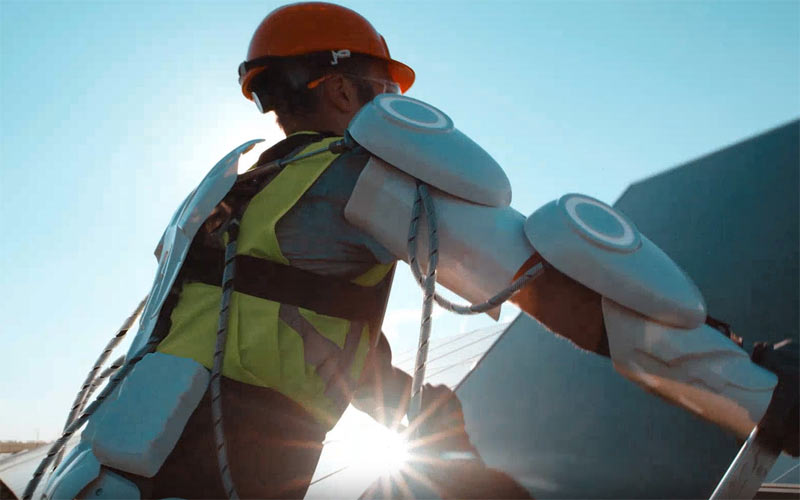 Solar power plants have become one of the most popular and sustainable solutions for generating electricity. By utilizing solar energy, which is free and unlimited, they enable environmentally friendly electricity production, contributing to the reduction of greenhouse gas emissions and dependence on fossil fuels. The process of installing a solar power plant is meticulously planned and involves several key phases, from site selection to connection to the electrical grid.
Solar power plants have become one of the most popular and sustainable solutions for generating electricity. By utilizing solar energy, which is free and unlimited, they enable environmentally friendly electricity production, contributing to the reduction of greenhouse gas emissions and dependence on fossil fuels. The process of installing a solar power plant is meticulously planned and involves several key phases, from site selection to connection to the electrical grid.
Phases of Solar Power Plant Installation
- Planning and Site Selection: The first phase of solar power plant installation is selecting the appropriate location. Solar power plants can be installed on various surfaces, such as building rooftops, open fields, or even water surfaces. It is crucial that the location is exposed to sunlight for most of the day, as this directly affects the efficiency of the system. Local weather conditions and potential obstacles, such as trees or tall buildings that may shade the panels, must also be considered.
- Selection of Appropriate Components: Once the location is determined, the necessary components that make up the solar power plant are selected. These include:
- Photovoltaic Panels: The basic component of every solar power plant. They convert solar energy into electrical energy. It is essential to choose quality panels with high efficiency.
- Inverters: Devices that convert the direct current (DC) produced by the solar panels into alternating current (AC) that can be used in households or fed into the grid.
- Mounting Systems: Structures to which the solar panels are attached. These can be static or designed to track the sun for greater efficiency.
- Battery Systems (optional): Allow energy storage for use when the sun is not shining or in case of grid disruptions.
- Obtaining Permits: Before starting installation, it is necessary to obtain the appropriate permits from local authorities and regulatory agencies. Procedures include verifying compliance with zoning plans, safety regulations, and other local requirements. In many countries, the installation of solar power plants is supported by various subsidies and incentives, making obtaining these funds an essential step.
- Installation and Setup: The installation of a solar power plant begins with mounting the supporting structures that will hold the solar panels. The supporting structures can be adapted to different surfaces, such as rooftops, ground, or special constructions. The next steps include:
- Installation of Photovoltaic Panels: Panels must be oriented towards the south (in the northern hemisphere) for optimal exposure to sunlight. It is crucial that they are installed at the correct angle corresponding to the local latitude.
- Connecting Electrical Components: After mounting the panels, cables are connected to link the panels to the inverter and then to the grid. Electricians must ensure that all connections are safe and correctly made.
- Connection to the Grid: If the solar power plant is not completely independent (off-grid), it must be connected to the public electrical grid to feed any excess energy produced into it.
- Testing and Commissioning: Once the system is installed, testing follows to ensure proper operation. This includes testing inverters, checking voltage, measuring efficiency, and ensuring that all components are functioning according to specifications. Commissioning the solar power plant is the critical moment when the system starts producing energy.
- Maintenance: Although solar power plants are low-maintenance systems, regular maintenance is essential to ensure optimal efficiency. This includes:
- Panel Cleaning: Regular removal of dust, dirt, or snow that can reduce the efficiency of the panels.
- Inspection of Electrical Components: Periodic checks of cables, inverters, and connections to prevent potential failures.
- Monitoring Operation: Most modern solar power plants are equipped with monitoring systems that allow real-time energy production monitoring and detection of potential issues.
Advantages of Solar Power Plants
The installation of a solar power plant offers numerous benefits:
- Sustainable Energy: Solar power plants produce clean energy without emissions, reducing environmental impact.
- Reduction of Electricity Costs: Households and businesses can significantly reduce electricity costs with a solar power plant or even become energy self-sufficient.
- Subsidies and Financial Incentives: In many countries, various financial incentives and subsidies exist for the installation of solar power plants, shortening the investment payback period.
- Long Lifespan: Solar panels have a lifespan of over 25 years and require very little maintenance.
Contact Us
If you would like more information about our services, contact us through the contact form. Our team will be happy to listen to you and provide solutions that meet your needs.







